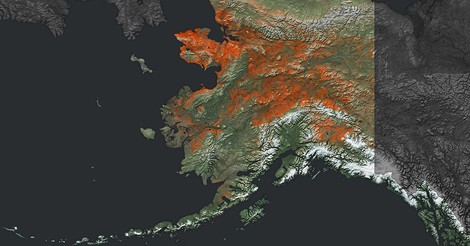Your podcast discovery platform
Curious minds select the most fascinating podcasts from around the world. Discover hand-piqd audio recommendations on your favorite topics.

piqer for: Climate and Environment Global finds Globalization and politics
I'm a freelance journalist, currently based in Madrid. I used to be a News Producer at CNBC in London before, but I thought a little bit more sun might do me good. Now I write for several news organizations, covering a range of topics, from Spanish politics and human rights for Deutsche Welle to climate change for La Marea.
What's Permafrost Thawing, And Why Does It Matter?
A couple of days ago, I recommended an article on carbon capture technologies. There, I explained how Earth is on a warming path that can't be reversed solely by cutting down emissions. I mentioned feedback loops — an effect that kicks in after temperature goes over a given limit, increasing the speed of the warming. Well, this article does a great job explaining one of them: Permafrost thawing.
Permafrost is the part of the soil that is permanently frozen. You find it, mostly, in the Arctic regions of Alaska, Canada and Russia. It contains a huge amount of carbon, in the form of organic matter. But this carbon can be transformed into methane and carbon dioxide and released into the atmosphere if the soil goes over 0ºC. And it is rapidly getting there.
[...]permafrost temperatures at shallow depths have climbed from minus 8 degrees Celsius to minus 3.
“Minus 3 is not that far from zero” [...] If emissions and warming continue at the same rate [...] near-surface temperatures will rise above freezing around the middle of the century.
The article kicks off with a magnificent animated map of Alaska, picturing the areas that are at risk of being lost to thawing. Then it does great at keeping it simple, following two local scientists on their daily quest to find out how much permafrost is out there, how much carbon does it contain, and how its thawing can affect climate. Some of the quotes are terrifying:
Worldwide, permafrost is thought to contain about twice as much carbon as is currently in the atmosphere.
Permafrost thawing is a known phenomenon, and it has been often studied and written about. However, it's not so common to find such a well explained article, with an excellent writing style and very good graphic design.
(This article is behind a paywall. Readers need to be subscribed to The New York Times to read more than 10 articles. If you haven't reached that limit, you can read this article for free.)
